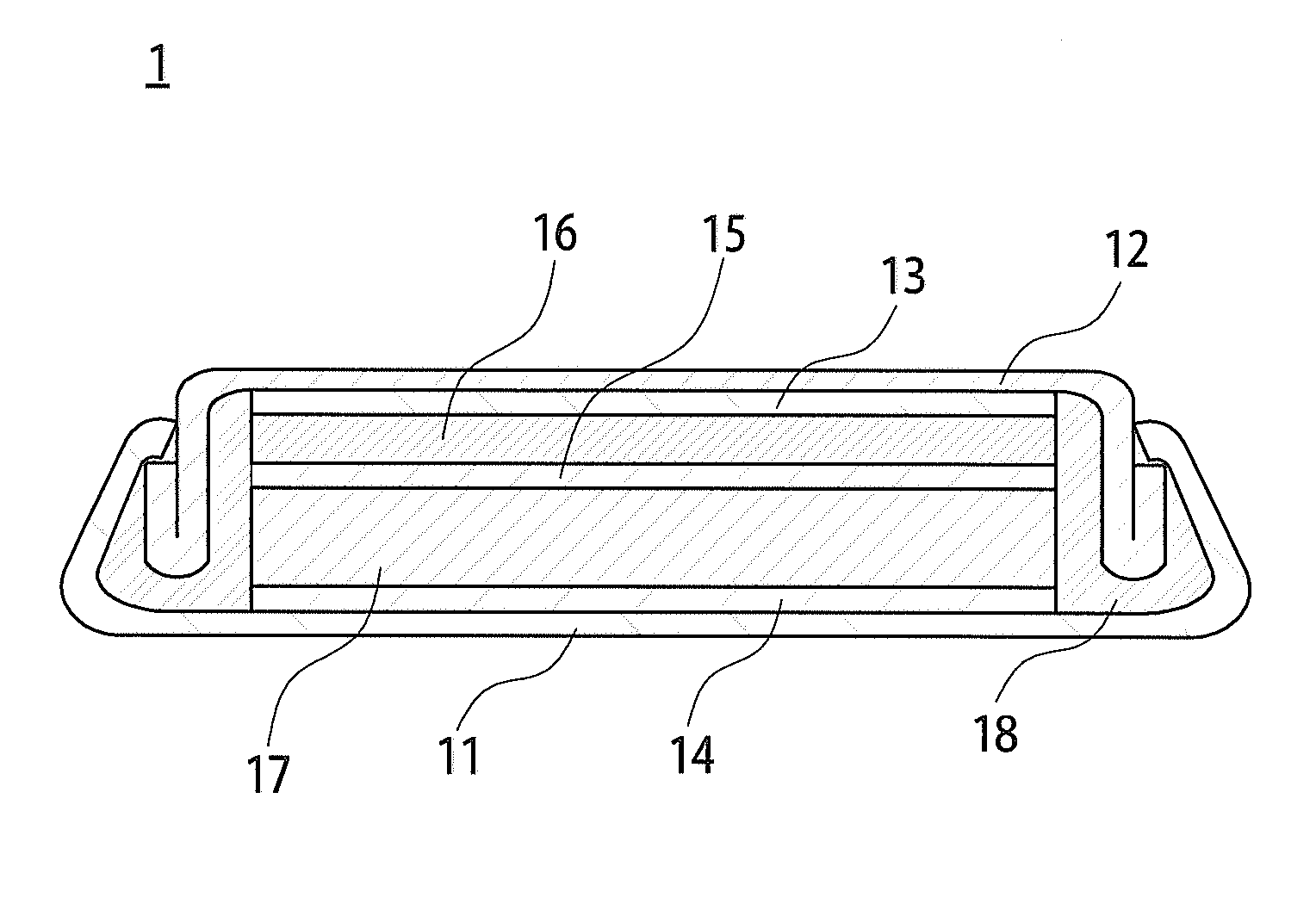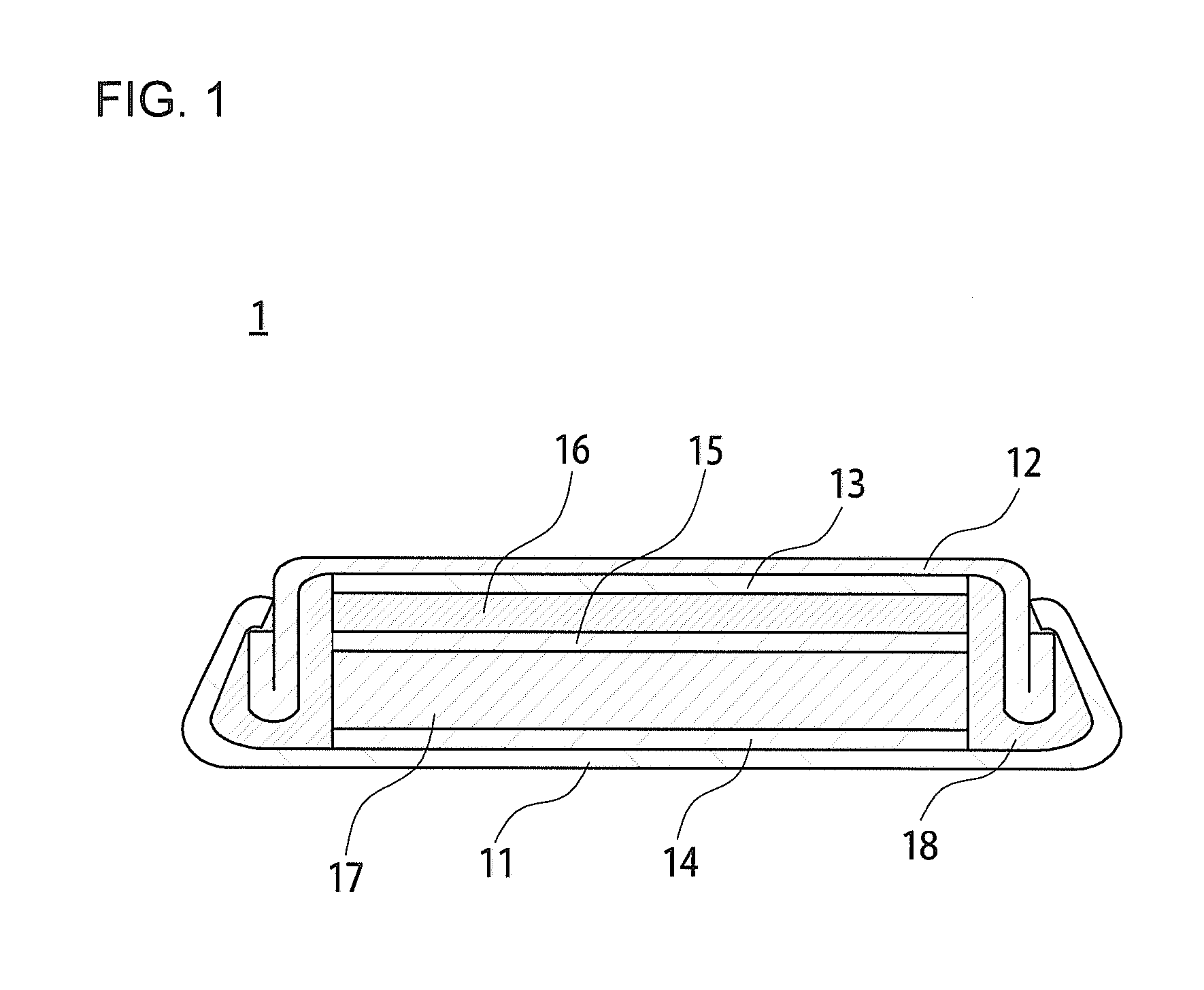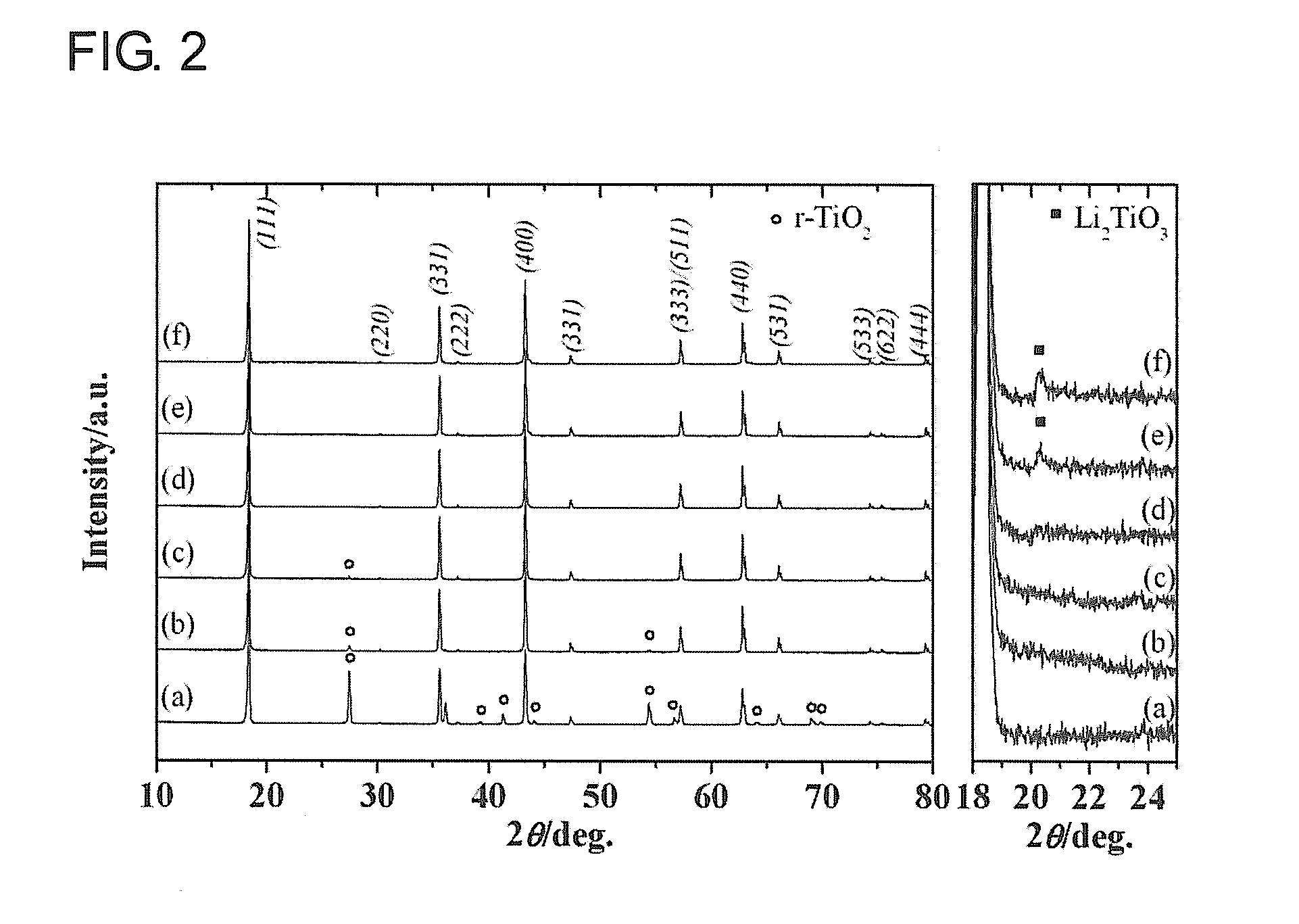Non-stoichiometric titanium compound, carbon composite of the same, manufacturing method of the compound, active material of negative electrode for lithium-ion secondary battery containing the compound, and lithium-ion secondary battery using the active material of negative electrode
- Summary
- Abstract
- Description
- Claims
- Application Information
AI Technical Summary
Benefits of technology
Problems solved by technology
Method used
Image
Examples
example 1
[0107]A description will now be given of an example of the synthesis of the non-stoichiometric titanium compound Li4−xTi5−xO12 (where 0
[0108]The non-stoichiometric titanium compound Li4+xTi5−xO12 (where 03 min−1, and flow rate of the solution: 400 mlh−1. Then, the non-stoichiometric titanium compound Li4−xTi5−xO12 (where 0<x<0.30) was obtained by calcining the obtained precursor at 600-900° C. for 12 hours in a muffle furnace.
example 1-1
[0109]Specimens were synthesized in a manner that the given Li / Ti ratios were provided from the non-stoichiometric titanium compound Li4+xTi5−xO12 calcined in the air at the temperature of 800° C. for 12 hours, and the XRD thereof were measured. FIG. 2 shows XRD patterns thereof. The XRD measurements were also conducted under similar conditions in subsequent second to fourth examples.
[XRD Measurement Conditions]
[0110]X-ray diffraction apparatus: Rigaku Denki, RINT2200, AFC7,[0111]Radiation source: CuKα radiation (A=1.541 Å), Applied voltage: 40 kV, Applied current: 30 mA,[0112]Incident angle to specimen surface: DS=1°, Angle formed by diffraction line with respect to specimen surface: RS=1°,[0113]Incident slit width: SS=0.15 mm, Scan range: 2θ=10°-80°, Scan speed: 4° / min
The reflection method was carried out with continuous scan under the conditions described above.[0114][Synthesized Specimen] Li4|xTi5−xO12 [0115](a)x=0.00, Li / Ti=0.80, (b)x=0.06, Li / Ti=0.82, (c)x=0.11, Li / Ti=0.84, (d...
example 1-2
[0121]An influence of the calcination temperature imposed on the specimens was studied for the fixed condition of x=0.16 (Li / Ti=0.86). XRDs of the non-stoichiometric titanium compound Li4.16Ti4.84O12 (x=0.16, Li / Ti=0.86) obtained by calcining at 600, 700, 800, and 900° C. in the air for 12 hours were measured. FIG. 5 shows XRD patterns thereof. Moreover, Table 2 shows lattice constants calculated from the XRD patterns of the specimens calcined at each of the temperatures, observed impurity phases, and specific surface areas measured through the BET method.
TABLE 2CalciningLatticeSpecifictemperatureconstantImpuritysurface area(° C.)(Å)phase(m2g−1)6008.287r-TiO2,—Li2TiO37008.36—2.928008.36—1.619008.361—0.91
[0122]The specimen obtained by calcining at 600° C. presented diffraction peaks caused by r-TiO2 and Li2TiO3 that are impurities, and it was found that this calcining temperature did not provide an intended specimen. The specimens obtained by calcining at 700° C., 800° C., and 900° C...
PUM
 Login to View More
Login to View More Abstract
Description
Claims
Application Information
 Login to View More
Login to View More - R&D
- Intellectual Property
- Life Sciences
- Materials
- Tech Scout
- Unparalleled Data Quality
- Higher Quality Content
- 60% Fewer Hallucinations
Browse by: Latest US Patents, China's latest patents, Technical Efficacy Thesaurus, Application Domain, Technology Topic, Popular Technical Reports.
© 2025 PatSnap. All rights reserved.Legal|Privacy policy|Modern Slavery Act Transparency Statement|Sitemap|About US| Contact US: help@patsnap.com



